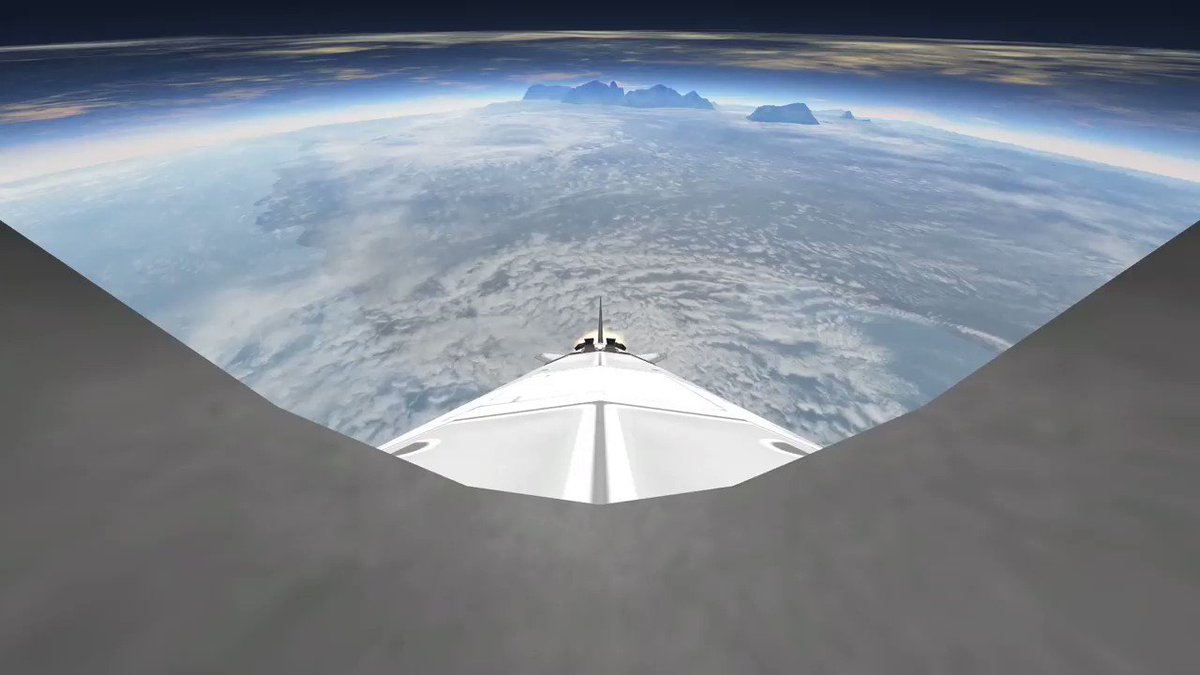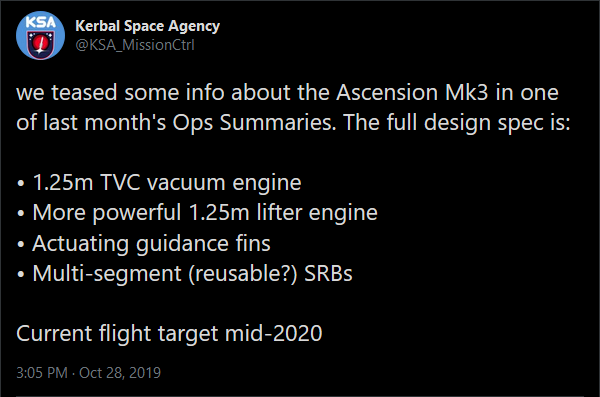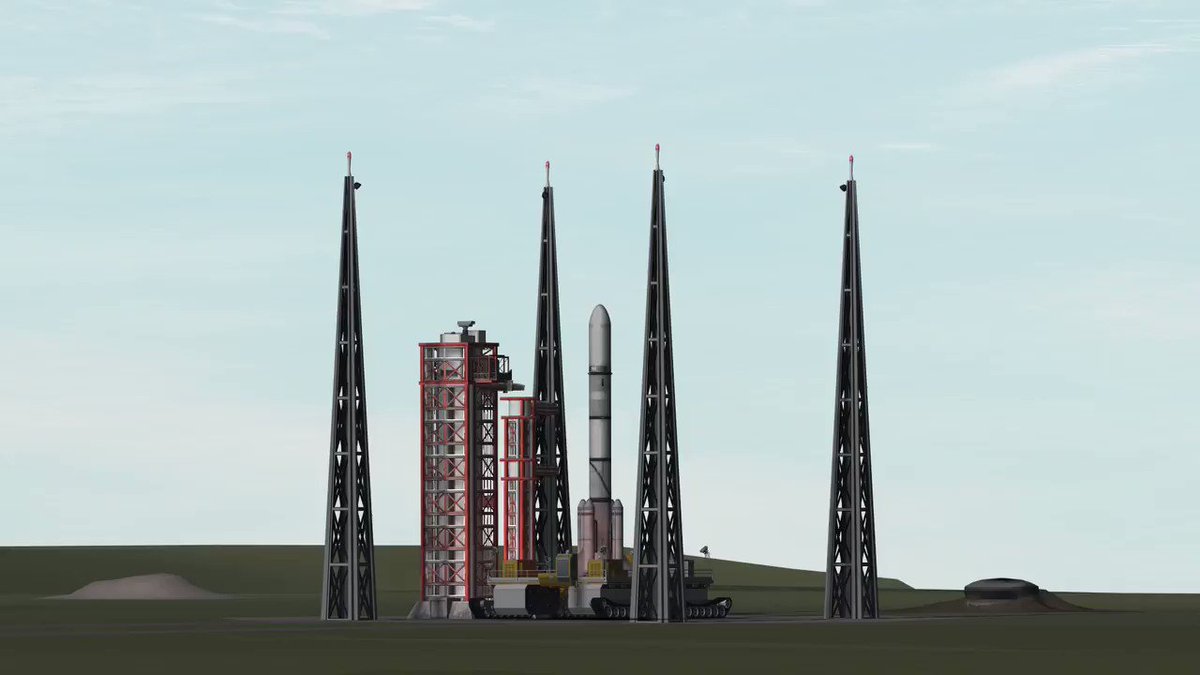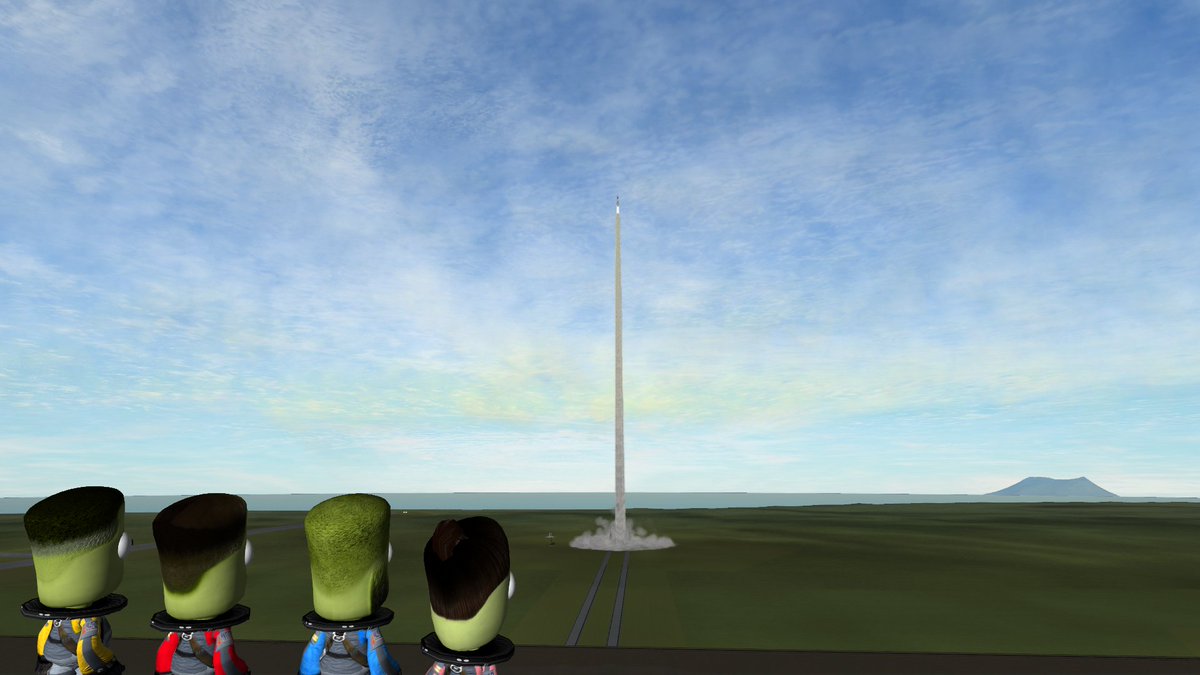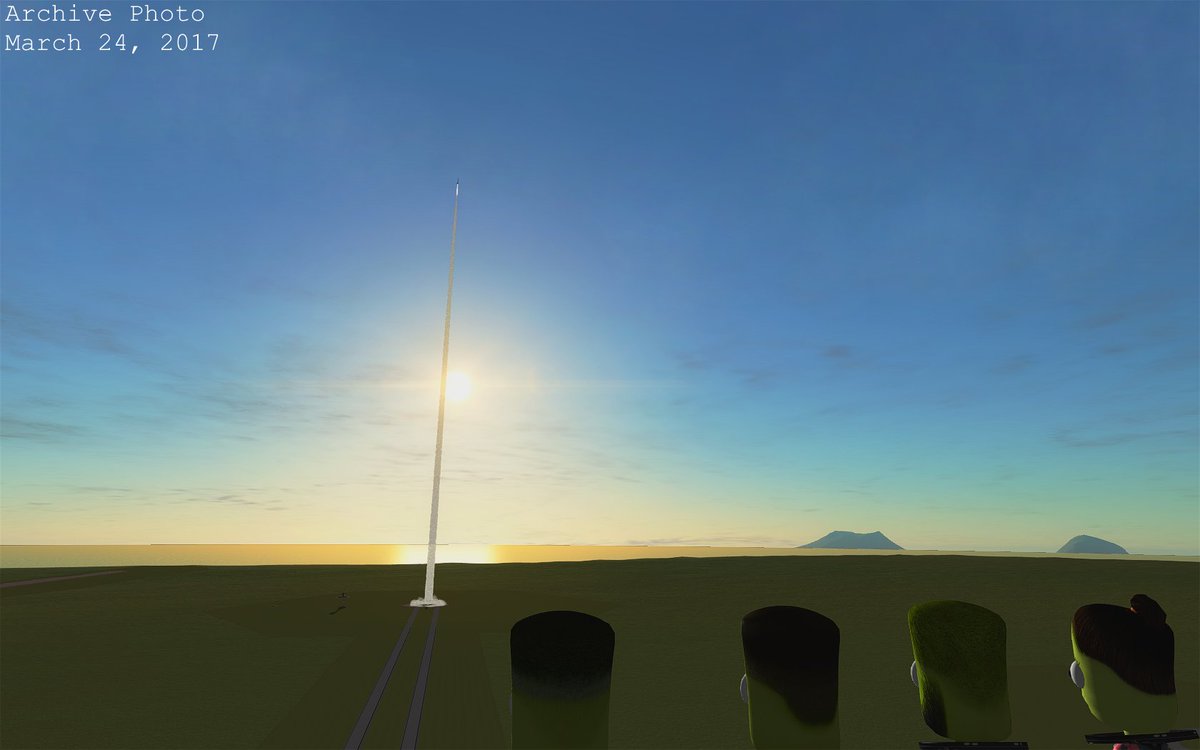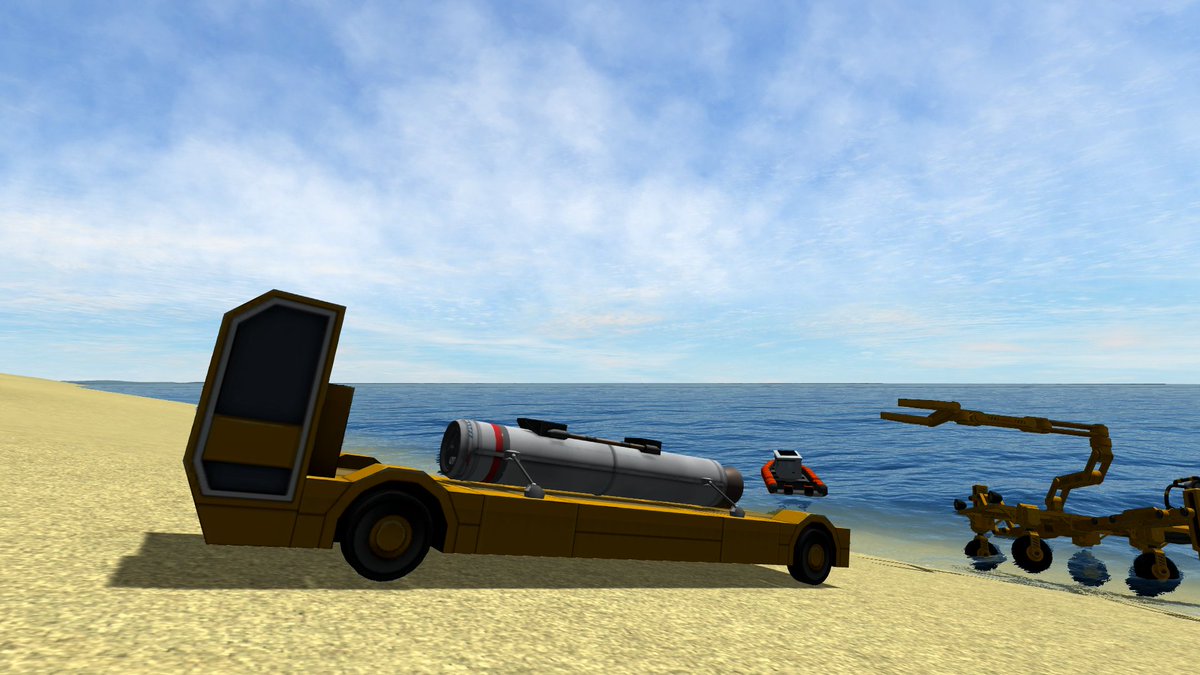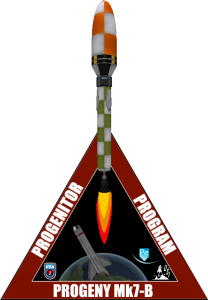 Hot on the heels of the first launch, the second mission was set to rectify several issues that ended up leading to a mission failure. Although the modifications needed for the rocket were made in time for an on-schedule launch the weather had other plans and forced a one day delay. Once the skies cleared up however all proceedings up to the terminal count were carried out with no additional issues.
Hot on the heels of the first launch, the second mission was set to rectify several issues that ended up leading to a mission failure. Although the modifications needed for the rocket were made in time for an on-schedule launch the weather had other plans and forced a one day delay. Once the skies cleared up however all proceedings up to the terminal count were carried out with no additional issues.
The Flight
With the service boom swung away and the rocket on internal power and radio-frequency comms, final preparations for launch were carried out mainly by the AFCS, now in control of the rocket. 5s before booster ignition the support arms holding the rocket steady against any sudden wind gusts were retracted to clear the way for ascent and at T-0 the 0.625m dual-segment SRB lit off to push the rocket off the engine support at 13:30:00.04 local time to begin its ascent.
With an initial TWR of 3 the rocket quickly gained enough speed in the first seconds for the guidance fins to have the authority to begin pitching the rocket downrange, heading the direction it was already facing – direct east. However instead the rocket went into a slight roll and actually ended up briefly pointing back west before correcting with another roll back towards 90° however upon reaching that heading spun around again and continued to have trouble pointing itself in the proper direction to the consternation of controllers.
While the rocket gyrated, it passed through Max Q of 51.988kPa at L+20s nearly halfway through the burn of the solid first stage. It finally appeared to sort itself out shortly before BECO at L+46s and attain a stable flight state however it remained unable to pitch over properly and it was clear the guidance fins were not operating nominally. Therefore even though it was not in the best position for a hot staging, coasting with malfunctioning guidance fins was definitely not a viable option and the command to stage was sent just seconds after booster cut off.
The second stage Ospray liquid fuel engine ignited at L+50s after successful separation from the booster however the staging event also caused the rocket to pitch up from 77° to nearly vertical and the guidance computer over-corrected in bringing the rocket’s nose down, causing it to flip nearly completely over. Thankfully by now the rocket had ascended past an altitude of 20km and the thinner air of the upper atmosphere offered less resistance to allow the engine gimbal to bring the rocket back onto a nominal ascent pitch after it flipped back the other way.
By L+1m19s into the flight the second stage had managed to cancel out both pitch and heading errors to bring the rocket back on course, although the inefficient first stage ascent and subsequent tumble had robbed the rocket of much of its performance. This meant that MECO came much earlier than the planned 70km, cutting off L+1m34s at only 42km with an 80km apokee because fuel had gotten too low for a potential restart in space. Still within the atmosphere, drag at the nose slowly pulled the rocket into a tumble as it continued upwards, finally reaching space at L+2m23s
Controllers considered using the centrifugal force of the tumble to help ensure an engine restart but the short burn would have little effect on apokee by the time the rocket stabilized so the decision was made instead to just activate the reaction wheel system and use what little time the rocket had in space to carry out more SAS testing than they were able to do on the first flight. The upgraded power management system proved it was able to allow the SAS to recover from the tumble, hold orientation, point radial out and then swing around to point retrograde with no issues.
The rocket re-entered the atmosphere at L+4m7s and due to the extra stresses it had to endure during ascent everyone was concerned that we would be seeing another break up. We lost comms due to plasma blackout from L+5m13s to L+5m31s then lost it again 4s later as the rocket dropped below the horizon. It was enough time though to receive data telling us the rocket made it through okay and was properly standing upright so unless a chute failure occurred it should be splashing down fully intact.
It would be a long wait to receive news of the rocket’s fate however because the poor ascent brought it down well short of its intended landing zone and it took the recovery vessel MSV Aldeny nearly 4 hours to reach the splashdown zone and another hour to hunt down the rocket. It was indeed recovered without any missing components this time but because we were unable to carry out a primary mission goal in restarting the engine this resulted in another mission failure overall.
Flight Analysis
Guidance Fin Actuator Failure
It was quickly determined after recovery of the booster that the behavior of the rocket during initial ascent was due to loss of hydraulic pressure to the actuator of one of the guidance fins. This was due to a small leak which quickly grew into a big leak once the fins began moving after launch. Normally this would have been detected prior to launch with a movement check of the fins but because of the way the rocket is mounted on the engine support stand it’s not possible to move the fins prior to launch. Visual inspection failed to show any fluid leaking from the rocket during pre-launch operations, so it likely came about shortly before launch – just bad timing. Lead Engineer Simon also posits that the extended storage time of the rocket could have been a contributing factor, similar to how we suffered a partial structural failure of the first rocket that also spent several months sitting around waiting to be used.
Second Stage Tumble
Although the launch team was mostly forced to stage immediately after BECO due to the fin issue, the rocket also seemed to be in a stable enough configuration for the staging to be successful regardless. However during staging the nose pitched up nearly 7° and this has now been attributed to lift from the big nose after the guidance fins returned to their neutral position to prepare for staging. The only way to avoid this using the current staging procedure would be to ensure the rocket’s angle of attack on staging is as close to 0° as possible. Currently it is almost -3° and this will always make the rocket want to nose back up towards its velocity vector when coasting and not being forced to do otherwise by the fins or an active engine gimbal.
Telemetry Logging Malfunction
While it did not suffer a complete execution failure like the first mission when the rocket broke up, the flight computer still hiccuped a bit when an improper accelerometer value was passed to the data logger. We continue to work on making the flight computer more robust and capable of handling bad data.
Future Plans
Progenitor and Ascension teams are working to overhaul procedures for storing assembled rockets over long time periods of weeks and months and we have more confidence in the performance of the guidance fins for these next two launches that should not be delayed anywhere near as long. Still, extra pre-launch checks will be carried out both in the HAB and out on the pad.
We are going to adjust staging slightly to have the fins maintain their pitch angle rather than center themselves prior to separation. This means the booster will continue to pitch over and so we will also be splitting the engine shroud down the middle on both sides and blowing it off the first stage adapter. This is so that nothing remains attached to the downwards rotating booster that can impact the Ospray engine bell and force the rocket’s nose up even higher as a result. There will still be a second delay prior to engine ignition so that the hot exhaust gases do not damage the parachute on the booster, but hopefully this will be enough to keep the nose from climbing too high before the thrust vector control system kicks in. Additionally if the fins work properly this time the rocket should finally be closer to the 20km altitude it is supposed to be at for stage separation and the thinner air will make the nose-up less prominent.









